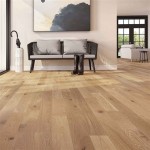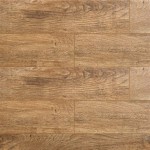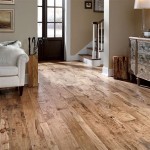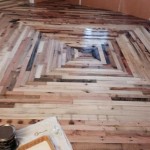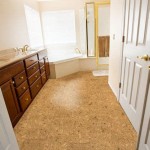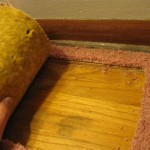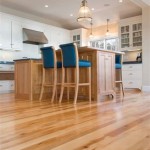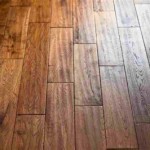Pressure-Treated Plywood: An Essential Guide to Using It as Subflooring
Building a durable and long-lasting subfloor is crucial for the integrity of your home. Pressure-treated plywood is a superior choice for subflooring due to its exceptional strength, water resistance, and protection against rot and insects. This article delves into the essential aspects of using pressure-treated plywood for subfloor applications, providing valuable information to ensure a sturdy and dependable subfloor system.
### Understanding Pressure-Treated PlywoodPressure-treated plywood is manufactured by impregnating plywood panels with a chemical treatment under high pressure. This treatment infuses the wood with preservatives that protect it from moisture, decay, and wood-destroying insects. As a result, pressure-treated plywood is highly resistant to rot, termites, and other pests, making it an ideal choice for subfloors, which are often exposed to moisture and other environmental factors.
### Advantages of Using Pressure-Treated Plywood for SubfloorsThere are several compelling reasons why pressure-treated plywood is a preferred choice for subfloors:
-Moisture Resistance:
The chemical treatment significantly enhances the plywood's resistance to moisture, preventing it from swelling, warping, or rotting when exposed to water. This is especially important in areas with high humidity or potential water exposure. -Rot and Decay Resistance:
Pressure-treated plywood is highly resistant to rot and decay caused by fungi and other microorganisms. This ensures that the subfloor remains sound and free from structural damage over time. -Termite and Insect Protection:
The preservatives in pressure-treated plywood repel and deter termites and other wood-destroying insects, protecting the subfloor and the entire structure from infestation. ### Considerations Before Using Pressure-Treated PlywoodWhile pressure-treated plywood offers numerous benefits, there are a few considerations to keep in mind:
-Cost:
Pressure-treated plywood is typically more expensive than untreated plywood. However, considering its durability and long-lasting performance, the investment can pay off in the long run by reducing the risk of costly repairs or replacements. -Environmental Impact:
The chemical treatment used in pressure-treated plywood contains preservatives that can pose environmental risks. Proper disposal and responsible use are essential to minimize the impact on the environment. -Proper Ventilation:
Installing pressure-treated plywood requires proper ventilation due to the potential release of fumes during and after installation. Ensure adequate airflow in the work area and follow safety precautions to minimize exposure. ### Installation Guidelines for Pressure-Treated Plywood SubfloorsTo ensure optimal performance, follow these guidelines when installing pressure-treated plywood subfloors:
-Foundation Preparation:
The subfloor must be installed on a solid, level foundation that will not settle or shift over time. Ensure that the foundation is stable and meets building codes. -Moisture Barrier:
Install a moisture barrier between the foundation and the pressure-treated plywood to prevent moisture from penetrating from below. -Spacer Blocks:
Use spacer blocks or shims to maintain a consistent gap between the plywood and the foundation, allowing for proper ventilation and drainage. -Fastening:
Secure the pressure-treated plywood to the foundation using galvanized or stainless steel nails or screws. Follow the manufacturer's recommendations for spacing and nail size. ### Maintenance and CareWith proper maintenance, a pressure-treated plywood subfloor can last for decades. Regular inspections and occasional cleaning are recommended to maintain its performance:
-Inspections:
Inspect the subfloor regularly for any signs of damage, rot, or insect infestation. Address any issues promptly to prevent further deterioration. -Cleaning:
Clean the subfloor periodically using a mild detergent and water. Avoid using harsh chemicals or abrasive scrubbers that could damage the surface. -Re-Treatment:
If the subfloor is exposed to extreme conditions or shows signs of wear, consider re-treating it with a suitable wood preservative to maintain its protection against moisture, decay, and insects. ### ConclusionPressure-treated plywood is an excellent choice for subflooring due to its exceptional durability, water resistance, and protection against rot and insects. By understanding its benefits, considerations, and proper installation techniques, you can ensure that your subfloor provides a solid foundation for your home for years to come.

Installing Wood Subfloors Over Concrete Hardwood Floors

Is Pressure Treated Wood Right For You

Plytanium S I Floor Plywood Subfloor Panels Georgia Pacific

Pressure Treated Lumber Raised Floor Living Pro

Handprint 1 2 In X Ft 4 Pressure Treated Pine Plywood Project Panel 205959 The Home

3 4x4x8 Cdx Pressure Treated Pt Plywood Sq Edge Hflcd34pt Hills Flat Lumber

Severe Weather 3 4 In X 2 Ft Pressure Treated Pine Plywood Sheathing The Department At Com

Marine Plywood Vs Pressure Treated Lbi Fiberglass S

Severe Weather 1 4 In X Ft 8 Pressure Treated Douglas Fir Plywood Sheathing 421025 Yahoo Ping

Handprint 1 2 In X Ft 4 Pressure Treated Pine Plywood Project Panel 205959 The Home
See Also
